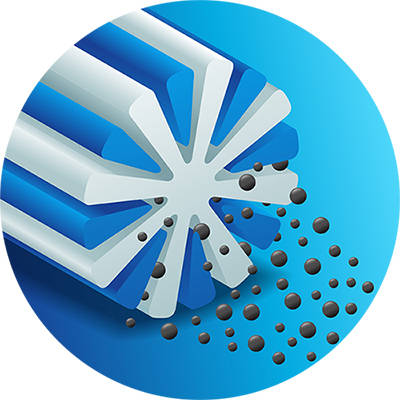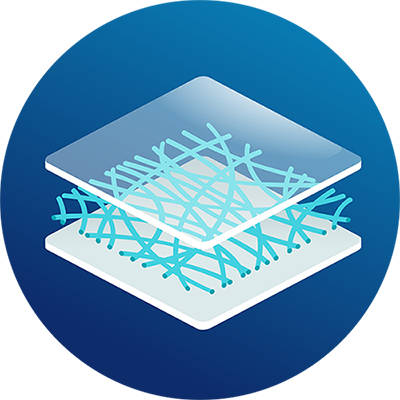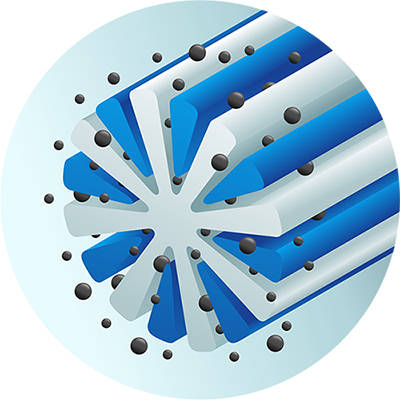Browse by
Introduction

Controlled radical polymerization is a method of making highly branched three-dimensional macromolecules known as hyperbranched polymers. It can use inimers, compounds that contain a starting group and a vinyl group in one molecule, or transmers, compounds that contain a chain transfer group and a vinyl group in one molecule. Controlled radical polymerization reagents can be divided into atom transfer radical polymerization agents, reversible addition-fragmentation chain transfer polymerization agents and nitroxide-mediated polymerization agents.
Types of CRP Reagents
- Atom Transfer Radical Polymerization Agents
The atom transfer radical polymerization (ATRP) reagents are mainly alkyl halides RX (X=Br, Cl), and its main function is to quantitatively generate growing chains to better control the polymer molecular weight. RXs with induced or conjugated α-carbons can be used to initiate and form the corresponding block copolymers. Among them, RX can be rapidly and selectively exchanged between growing chains and transferring metals. The structure of polymerization auxiliaries also affects the copolymer, for example, polyhalogenated alkane branching auxiliaries can facilitate the formation of star polymers. Therefore, ATRP reagents have become a powerful tool for preparing polymers with predetermined molecular weights, retained chain end functional groups, and low dispersity (Fig. 1).
 Fig. 1. Application of atom transfer radical polymerization agents in preparing polymers (Polymer Chemistry. 2021, 12(42): 6071-6082).
Fig. 1. Application of atom transfer radical polymerization agents in preparing polymers (Polymer Chemistry. 2021, 12(42): 6071-6082).
- Reversible Addition-fragmentation Chain Transfer Polymerization Agents
The structure of reversible addition-fragmentation chain transfer polymerization (RAFT) reagents consists of disulfide ester with an active group (Z group) and a leaving group (R group). RAFT reagents are generally classified according to the type of Z-base and include some di-thioesters, tri-thiocarbonates, xanthate and di-thiocarbamates. Z-group RAFT reagents with alkyl, aryl, or aryl groups, known as di-thioesters, provide optimal control over highly reactive monomers in a manner that almost completely inhibits the polymerization of low-active monomers. Such RAFT agents have general applicability in the polymerization of acrylic acid, styrene and acrylamide monomers. Furthermore, tri-thiocarbonates with thioalkyl groups in the Z groups can well control the polymerization of acrylate monomers. RAFT reagents with amino Z group have excellent control effect on vinyl acetate (VAC), N-vinylpyrrolidone (NVP) and other vinyl monomers. Xanthate reagents with alkoxy and aryl groups have also been widely used in RAFT polymerization of VAC, NVP and other vinyl monomers (Fig. 2).
 Fig. 2. Types of reversible addition-fragmentation chain transfer polymerization agents (Progress in Polymer Science. 2018, 87: 34-69).
Fig. 2. Types of reversible addition-fragmentation chain transfer polymerization agents (Progress in Polymer Science. 2018, 87: 34-69).
- Nitroxide-mediated Polymerization Agents
The nitroxide-mediated polymerization agent consists of di-isopropyl azodicarboxylate (AIBN) and benzoyl peroxide (BPO). Mechanistically, BPO induces chain growth by initiating radical reaction with monomers, and then immediately reacts with nitrogen oxide radicals to form nitrogen oxide-trapped alkoxyamines. BPO is the most widely used reagent in polymerization, including unsaturated polyester resin curing, organic glass adhesives and cross-linking agent, while azo dinitrile is mainly used as initiator for rubber, plastic and polymerization.
If you are interested in our controlled radical polymerization reagents, please contact us immediately!
References
- Yin, R. et al. Tuning dispersity of linear polymers and polymeric brushes grown from nanoparticles by atom transfer radical polymerization. Polymer Chemistry. 2021, 12(42): 6071-6082.
- Abreu, C.M.R. et al. Poly(vinyl chloride): current status and future perspectives via reversible deactivation radical polymerization methods. Progress in Polymer Science. 2018, 87: 34-69.
- Murad Bhayo, A. et al. Polymer brushes: Synthesis, characterization, properties and applications. Progress in Materials Science. 2022, 130: 101000.



 Fig. 1. Application of atom transfer radical polymerization agents in preparing polymers (Polymer Chemistry. 2021, 12(42): 6071-6082).
Fig. 1. Application of atom transfer radical polymerization agents in preparing polymers (Polymer Chemistry. 2021, 12(42): 6071-6082). Fig. 2. Types of reversible addition-fragmentation chain transfer polymerization agents (Progress in Polymer Science. 2018, 87: 34-69).
Fig. 2. Types of reversible addition-fragmentation chain transfer polymerization agents (Progress in Polymer Science. 2018, 87: 34-69).












